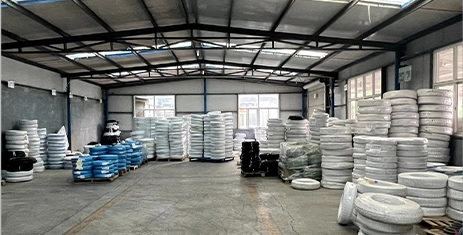Effective Solutions for Fixing Car Air Conditioning Pipes and Ensuring Optimal Performance
Car Air Conditioning Pipe Repair A Comprehensive Guide
When it comes to keeping your vehicle comfortable during hot weather, a properly functioning air conditioning (AC) system is essential. One critical component of this system is the AC pipe, which transports refrigerant throughout the system. However, like any other car part, these pipes can wear down, develop leaks, or become damaged over time. In this article, we will discuss common issues associated with car air conditioning pipes and provide a guide on how to repair or replace them.
Understanding the Role of AC Pipes
The air conditioning system in your car consists of several key components the compressor, condenser, evaporator, and the pipes connecting them. AC pipes, specifically, are responsible for moving refrigerant gas and liquid between these components, facilitating the cooling process. If any of these pipes develop a leak, it can lead to poor cooling performance or even complete system failure.
Common Problems with AC Pipes
1. Leaking Refrigerant One of the most common issues with AC pipes is leakage. Factors like corrosion, wear and tear, or physical damage can cause refrigerant to escape, resulting in decreased cooling efficiency.
2. Blockages Dirt, debris, or contaminants can accumulate in the pipes, leading to blockages. This can strain the system, preventing the refrigerant from circulating effectively.
3. Kinks and Bends Improper installation or external pressure can cause AC pipes to become kinked or bent. This can restrict refrigerant flow and impair the cooling performance.
4. Cracks and Breakage Over time, constant exposure to temperature fluctuations and vibrations can lead to cracks or even breaks in the pipes. This requires immediate attention to prevent further damage.
Repairs and Replacement
When it comes to dealing with air conditioning pipe issues, you have a couple of options repair or replace
.1. Repairing AC Pipes
In some cases, minor leaks can be repaired without needing to replace the entire pipe. Here are steps you can follow
car air con pipe repair

- Identify the Leak Use UV dyes or soapy water to locate the source of the leak. If you notice bubbling in the soapy water, you’ve found the leak. - Clean the Area Once identified, clean the area around the leak thoroughly. This ensures that any adhesive or sealant can bond properly.
- Use Repair Products There are various sealants and repair tapes specifically designed for automotive AC systems. Follow the manufacturer’s instructions carefully to apply these products.
- Test the Repair After letting the sealant dry, run the AC system and check for any signs of leakage.
2. Replacing AC Pipes
If the damage is extensive, replacing the entire AC pipe may be necessary. Here’s a simplified process
- Disconnect the System Before starting work, ensure the AC system is empty. This may require special equipment to safely remove refrigerant.
- Remove the Damaged Pipe Locate the damaged pipe and carefully disconnect it from the compressor, condenser, and evaporator. Make sure to note how the components were connected for reassembly.
- Install the New Pipe Connect the new pipe in the same manner as the old one, ensuring all connections are secure.
- Replenish Refrigerant After everything is in place, refill the system with the correct type and amount of refrigerant.
- Test the System Finally, turn on your car and check the performance of the AC. Listen for unusual noises and monitor the temperature to ensure that the system is functioning properly.
Conclusion
Maintaining your car’s air conditioning system is crucial, especially during the warmer months. By understanding the common issues associated with AC pipes and knowing how to repair or replace them, you can keep your vehicle comfortable and your AC system in top-notch condition. If you’re unsure about handling these repairs yourself, don’t hesitate to consult with a professional mechanic. Proper maintenance ensures a long lifespan for your vehicle’s air conditioning system.
-
Ultimate Spiral Protection for Hoses & CablesNewsJun.26,2025
-
The Ultimate Quick-Connect Solutions for Every NeedNewsJun.26,2025
-
SAE J1401 Brake Hose: Reliable Choice for Safe BrakingNewsJun.26,2025
-
Reliable J2064 A/C Hoses for Real-World Cooling NeedsNewsJun.26,2025
-
Heavy-Duty Sewer Jetting Hoses Built to LastNewsJun.26,2025
-
Fix Power Steering Tube Leaks Fast – Durable & Affordable SolutionNewsJun.26,2025

